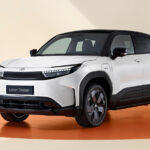Honda has stepped into the electric scooter market with the launch of the Activa e:, based on their highly popular Activa lineup. While this move has generated buzz, it has also raised eyebrows due to a key limitation: the scooter cannot be charged at home. Instead, it relies entirely on battery-swapping technology, which could affect its success in the long run.
The Battery Swapping Model: How It Works
The Activa e: uses swappable batteries, meaning riders don’t own the battery packs. When the scooter runs out of charge, users must visit a swapping station to replace the drained batteries with fully charged ones. Each battery has a capacity of 1.5 kWh and weighs about 10 kilograms, making it easy to handle.
Honda’s aim is to replicate the experience of refueling a petrol scooter, where swapping batteries replaces filling the tank. The Activa e: has two battery packs with a combined capacity of 3 kWh, offering a range of 102 kilometers per charge.
The Challenges of Battery Swapping
While Honda’s idea sounds innovative, it comes with significant drawbacks:
- Lack of Home Charging
Unlike most electric scooters, the Activa e: doesn’t allow charging at home or at an office. This reliance on swapping stations could be inconvenient for users who don’t have a station nearby. - Limited Infrastructure
Even in cities like Bengaluru, where Honda has started setting up swapping stations, the number of stations is still low. As demand grows, there’s a risk of overcrowding or battery shortages, causing frustration for users. - Battery Quality Concerns
Swapping stations supply batteries that may have been used by others, and over time, these batteries could degrade. Users might face issues if they receive a battery with reduced capacity or performance.
The Benefits of Battery Swapping
To be fair, battery swapping does have its advantages. It is a practical solution for people without access to dedicated parking or charging points. Additionally, if a scooter runs out of charge mid-journey, users can quickly replace the batteries instead of waiting hours for a recharge.
Honda’s Bold Gamble
Honda’s decision to forgo home-charging capability is risky. While the swapping model mimics the convenience of petrol refueling, the lack of a robust infrastructure could hinder its adoption. Potential buyers will need to carefully consider whether this trade-off aligns with their needs.
The Activa e: is a promising start for Honda in the EV segment, but its ultimate success will depend on how quickly and effectively the battery-swapping network expands and addresses user concerns.




